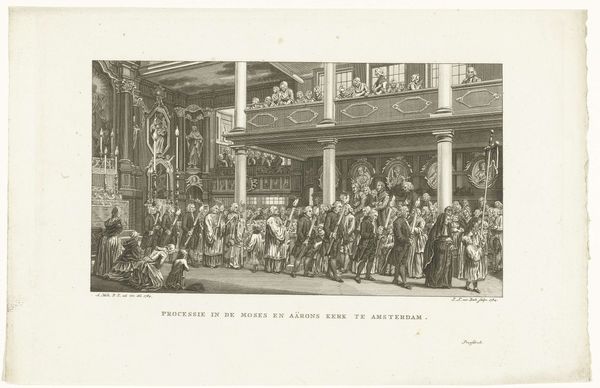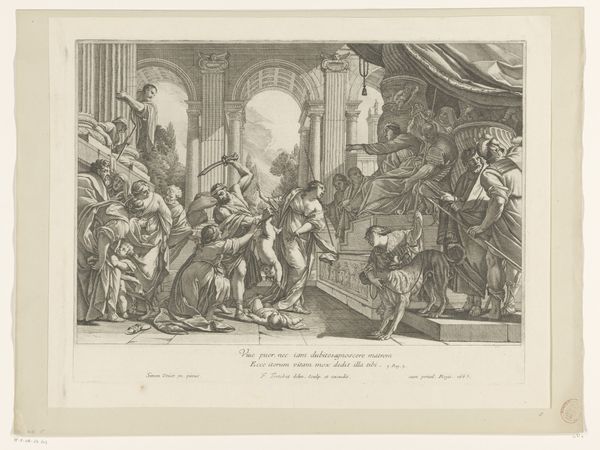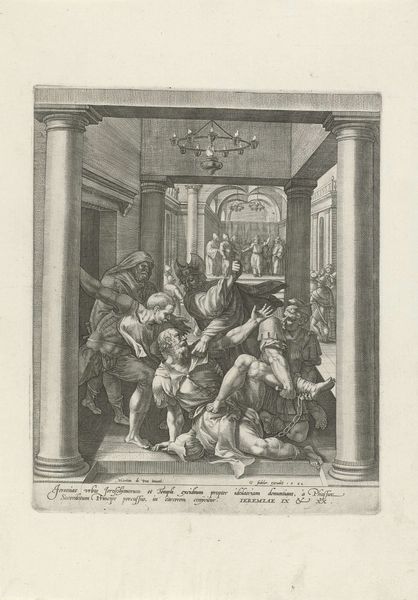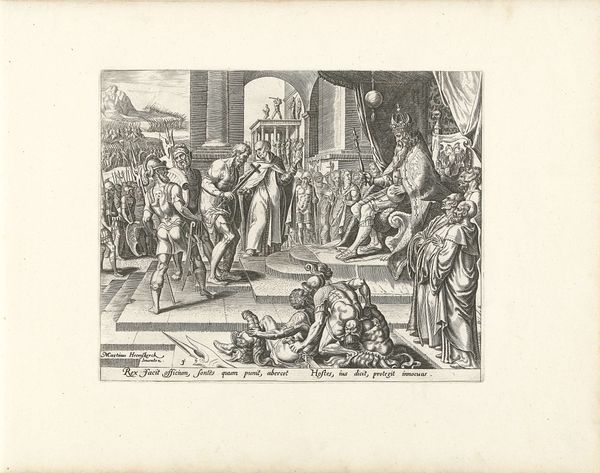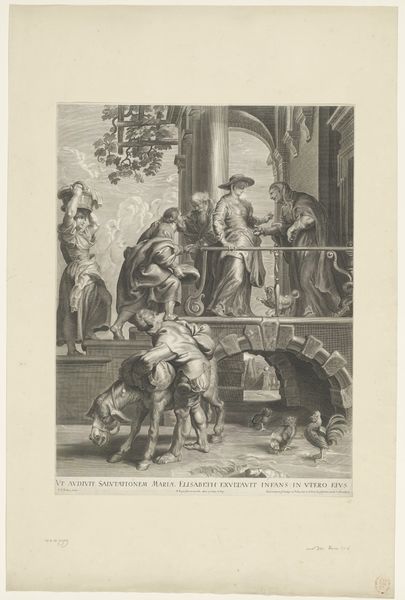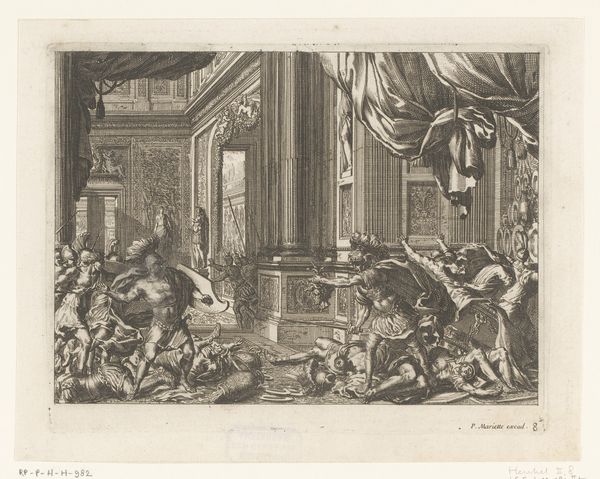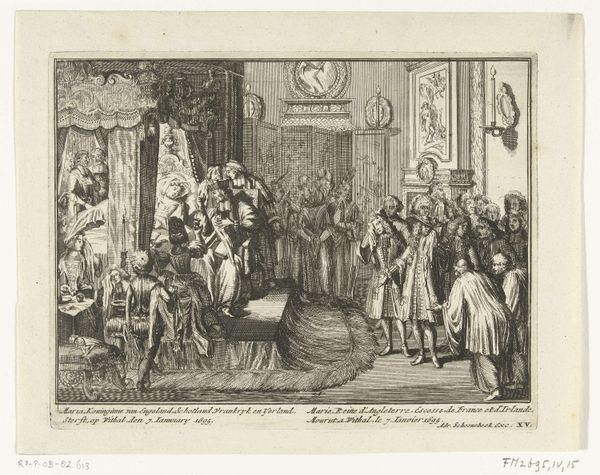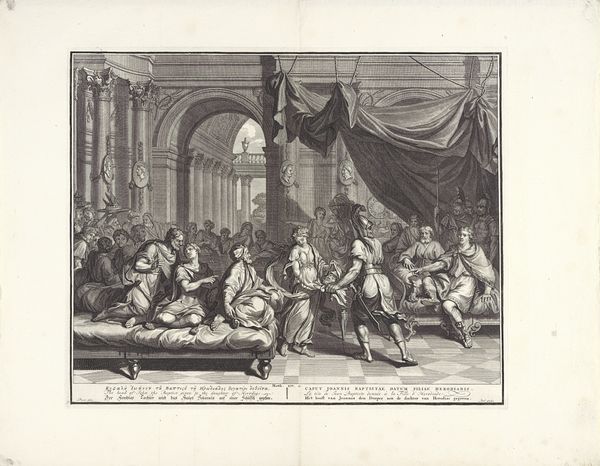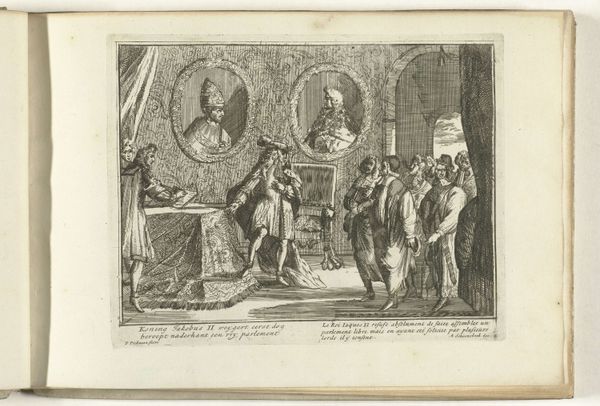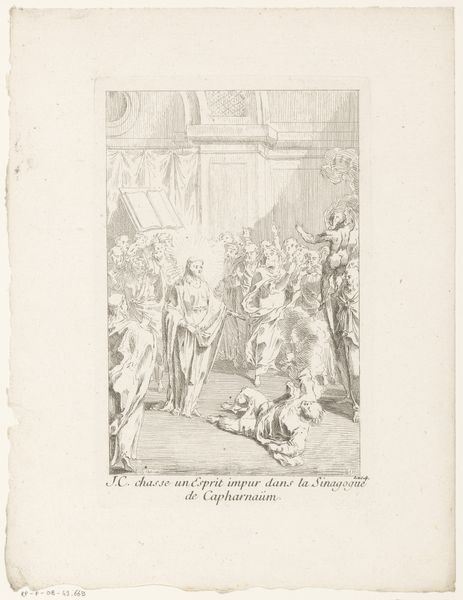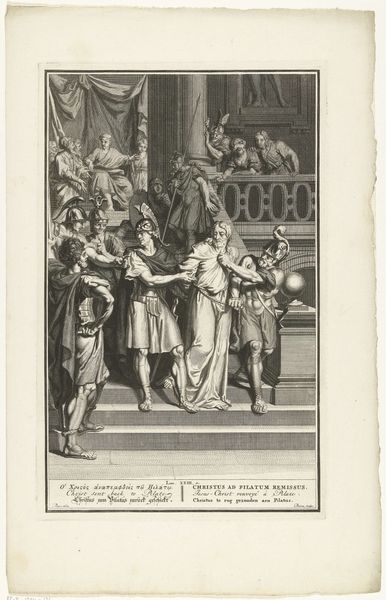
print, engraving
#
baroque
#
ink paper printed
# print
#
old engraving style
#
figuration
#
personal sketchbook
#
history-painting
#
engraving
Dimensions: height 363 mm, width 427 mm
Copyright: Rijks Museum: Open Domain
Curator: Joseph Mulder's engraving, "Bels priesters in de tempel," made sometime between 1720 and 1728, depicts a scene within a temple. The material handling is so delicate here. Editor: The scene is indeed intriguing. The contrast between the stark columns and the chaotic crowd creates a palpable sense of unease, a tension loaded with social and religious critique, almost as if it foreshadows the disruption of power. Curator: Think about the labour involved in producing these intricate lines with the engraving tools and the physical mechanisms by which they are printed on paper. These choices have socio-economic implications; it makes one wonder, who has the time, training, and resources to consume art such as this? What level of labour are they even prepared to purchase or display? Editor: Indeed, Mulder's piece raises important questions of access. Also consider the figures: a diverse collection of characters seemingly involved in ritualistic practice. Given the period, one cannot ignore the relationship between such representations and prevailing narratives of faith, colonialism, and societal control. Who is being represented, and what narratives are being legitimized through this distribution of printed material? Curator: Right, this Baroque style emphasizes the technique of illusion through printmaking. And while the content does focus on history-painting, I find myself asking: What specific workshops produced the paper and ink? What types of tools and specialized skills were necessary for its manufacturing? Who oversaw these resources? Editor: By looking closer, Mulder uses figuration to highlight societal fault lines of gender, and religious authority through their detailed depictions of gestures, body language, and costume. These details, while seemingly incidental, weave complex patterns of complicity and dissent within 18th-century Europe. The very act of representation becomes an argument for power and subversion. Curator: Viewing "Bels priesters in de tempel" is indeed an immersive material journey into art-making history, offering insight into past forms of art production and social practices. Editor: Agreed. Reflecting on Mulder’s work, we have glimpsed a visual world rich in art history and commentary about access to material in Dutch society. Thank you for exploring these intersections with me.
Comments
No comments
Be the first to comment and join the conversation on the ultimate creative platform.
